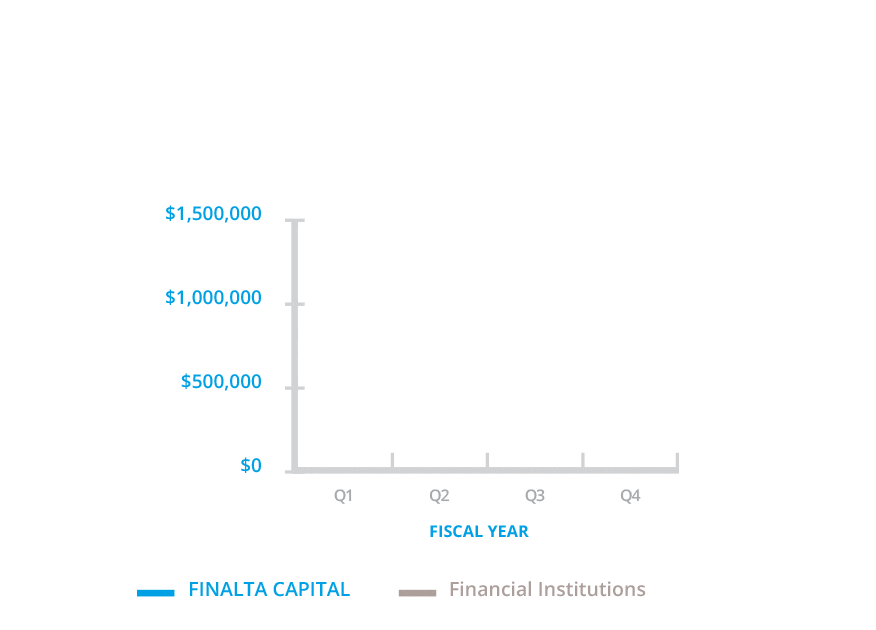With accelerated disbursements on the first day of each quarter in anticipation of budgeted expenses, you can access your cash when you really need it.
Need to pay salaries or subcontractors or buy materials before you receive your funding? FINALTA CAPITAL's game-changing approach puts the money in your pocket before your eligible expenses are even incurred.
Usual financing terms provide that FINALTA CAPITAL pays out 25% of your annual loan on the first day of each quarter in anticipation of budgeted expenditures. That's 3 to 6 months earlier than the disbursement schedule of other financial or government institutions which wait for the spending of eligible expenditures to occur or the tax credit claim to be filed before authorizing their disbursements.
FINALTA CAPITAL does not deduct any reserves or hold back from disbursements, unlike financial and government institutions that typically withhold 20% of the loan amount until the tax credit claim is filed with tax authorities, typically 3 to 5 months after the end of the fiscal year in which the eligible work was completed.
The institutional interest rate is adjusted to the level of risk and the amount of the loan, with no hidden fees.
Pre-financing of budgeted expenditures is a unique advantage with FINALTA CAPITAL. Reducing the pressure of an intense R&D program on your cash flow, FINALTA CAPITAL frees up your line of credit, diversifies your funding sources and increases your bargaining power.

Disbursement Schedule

Sectoral funds set up by FINALTA CAPITAL
Create yoursSee the comparison basis (data and hypotheses) with other financial institutions
Data and hypotheses







